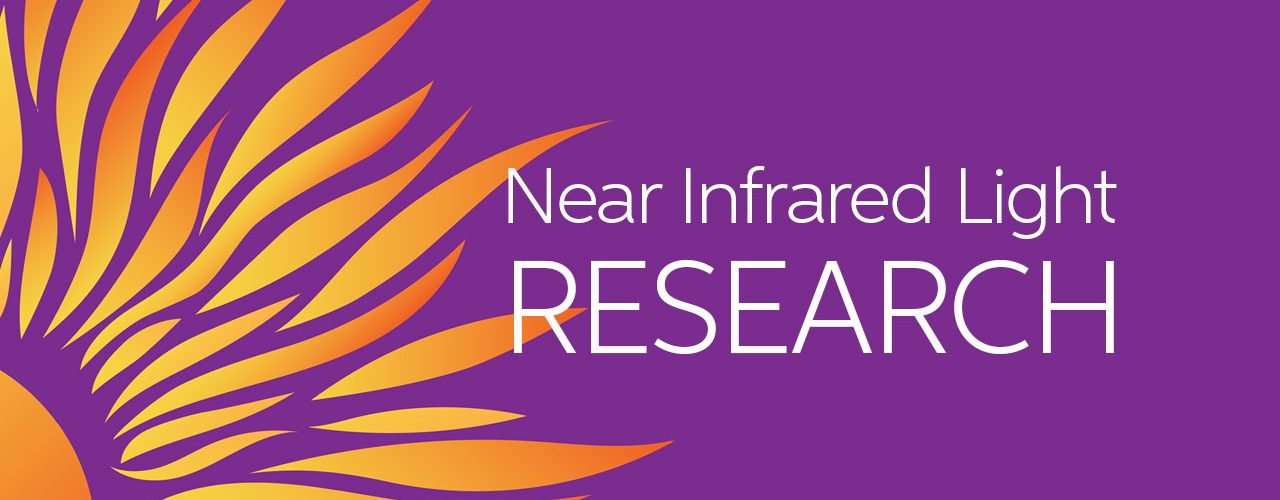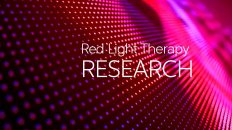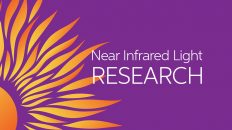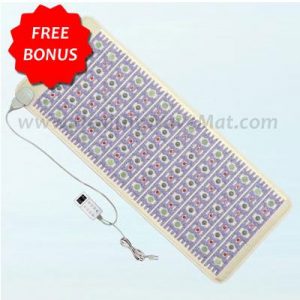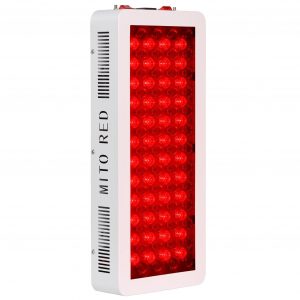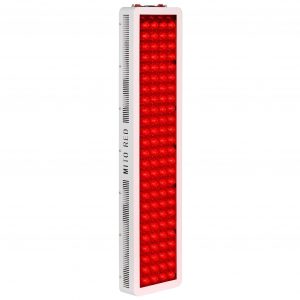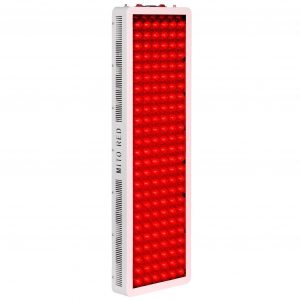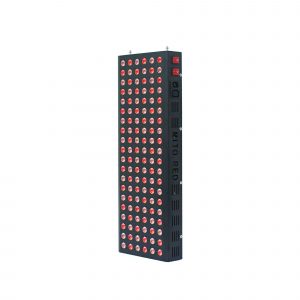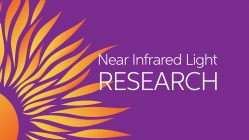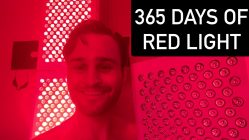The recent outbreak of COVID-19, which continues to ravage communities with high death tolls and untold psychosocial and catastrophic economic consequences, is a vivid reminder of nature’s capacity to defy contemporary healthcare.
The pandemic calls for rapid mobilization of every potential clinical tool, including phototherapy-one of the most effective treatments used to reduce the impact of the 1918 “Spanish influenza” pandemic.
This paper cites several studies showing that phototherapy has immense potential to reduce the impact of coronavirus diseases, and offers suggested ways that the healthcare industry can integrate modern light technologies in the fight against COVID-19 and other infections.
The evidence shows that violet/blue (400-470 nm) light is antimicrobial against numerous bacteria, and that it accounts for Niels Ryberg Finsen’s Nobel-winning treatment of tuberculosis.
Further evidence shows that blue light inactivates several viruses, including the common flu coronavirus, and that in experimental animals, red and near infrared light reduce respiratory disorders, similar to those complications associated with coronavirus infection.
Moreover, in patients, red light has been shown to alleviate chronic obstructive lung disease and bronchial asthma.
These findings call for urgent efforts to further explore the clinical value of light, and not wait for another pandemic to serve as a reminder.
The ubiquity of inexpensive light emitting lasers and light emitting diodes (LEDs), makes it relatively easy to develop safe low-cost light-based devices with the potential to reduce infections, sanitize equipment, hospital facilities, emergency care vehicles, homes, and the general environment as pilot studies have shown.
SOURCE: US National Institute of Health’s National Library of Medicine
https://pubmed.ncbi.nlm.nih.gov/32388486/
Full article: https://www.ncbi.nlm.nih.gov/pmc/articles/PMC7194064/
. . . . In 1918, governments and the medical establishment frantically sought every means to fight the H1N1 flu pandemic, but the results were mixed. Available reports clearly show that sunlight was effective in reducing flu-related mortality and morbidity, and person-to-person infection [[7], [8], [9]]. Patients with severe infections exposed to sunlight therapy outdoors recovered better than those treated indoors, and the treatment prevented death among patients and infections among the healthcare workers [[8], [9], [10]].
Like the 1918 pandemic, most of those succumbing to COVID-19 pandemic today die from disease-related complications, such as pulmonary inflammation/edema, pneumonia and acute respiratory disorder syndrome (ARDS). In the case of the 1918 flu, overcrowding in poorly lit and poorly ventilated enclosures raised associated risks of infection, a major reason that the City of Boston was badly hit by the flu until exposure to sunlight was introduced [[7], [8], [9], [10]]. By one anonymous editorial account [9], the Massachusetts State Health Department found sunlight therapy to be “the most valuable factor in reducing mortality,” decreasing fatality of hospitalized patients from 40% to 13%, boosting flu immunity among physicians and nurses, and overall, besting the outcome of vaccines, which, then, were in their early stages of development [[6], [7], [8], [9]]. The benefit of exposure to the healing rays of the sun was so obvious that it became a common form of treatment against tuberculosis—another respiratory disorder, as well as wound infections, psoriasis, acne vulgaris, rickettsia, depression, jaundice, and a host of other diseases [[10], [11], [12], [13], [14], [15], [16], [17], [18], [19]]. Indeed, records indicate that across North America, many healthcare facilities built sunrooms to which patients were wheeled for sun therapy, then known as heliotherapy [11]. Written accounts of the successes of heliotherapy abound, and as the treatment became popular, it was adapted to include treatment with various lamps [[15], [16], [17], [18], [19]].
None of the foregoing should come as a surprise, because less than 25 years before the 1918 pandemic, a Danish physician, Niels Ryberg Finsen, had developed a light source that was successful in curing patients with skin tuberculosis (lupus vulgaris) and other ailments [20,21]. Between 1896 and 1901, he treated as many as 804 patients with skin tuberculosis and similar microbial infections at his Medical Light Institute, achieving 83% cure rate [20,21,22]. The Finsen lamp became widely popular and was adopted in most of Europe and North America, earning Finsen the Nobel Prize in 1903. Finsen himself acknowledged the healing power of sunlight but erroneously assumed that his lamp took advantage of the UV spectrum of radiation. It is quite conceivable that his pioneering work spurred many in the healthcare industry to use sunlight to treat victims of the 1918 influenza pandemic and beyond. To date, studies continue to extol the susceptibility of viruses to rays emanating from the sun [11,16].
While it is obvious that Finsen pioneered the scientific documentation of the bactericidal effect of light, the use of light to treat a variety of diseases predates him. Perhaps the earliest record of sunlight as medical treatment dates back to the time of Egyptian Pharaohs—more than 5000 BCE—as evidenced by images, archeological findings and artifacts [[23], [24], [25], [26]]. A popular ancient Egyptian image clearly shows a family exposing themselves to the healing rays of the sun (Fig. 1 ). Veneration of the sun and acknowledgement of its healing power remains a cultural practice in most of Africa, and early records indicate that the Egyptians treated chronic ulcers successfully by exposing them to sunlight [23,24]. Furthermore, sunbathing was a common practice, not just in ancient Egypt, Babylonia and Mesopotamia, but ancient Greece and Rome [[23], [24], [25], [26]].
The Greeks and the Romans clearly recognized the healing power of the sun. They built solariums and sunbaths, and the Greeks even used them to enhance the strength of athletes preparing for the Olympic Games by exposing them to several months of sunlight treatment. The word, heliotherapy, actually derives from the Greek name for their sun god, “Helios”; heliotherapy meaning sunlight therapy [[23], [24], [25], [26]]. Furthermore, Ayurvedic medical records show that as far back and 1400 BCE; Hindus used the combination of sunlight and photosensitive herbs, such as furocoumarins, to treat vitiligo and other conditions—a combined treatment, which many refer to today as photodynamic therapy [27]. Moreover, records indicate that heliotherapy was a cardinal method used in early Daoism, which Lingyan Tzu-Ming introduced in China during the first century CE [28]. In summary, evidence from many parts of the world clearly show that communities worldwide used heliotherapy to treat a variety of diseases. In those days, the inimical effects of UV were unknown before UV was discovered in 1801 [11].
The discovery of UV transformed the practice of heliotherapy into clinical phototherapy as the antimicrobial effects of UV became evident during the second half of the 19th century. As early as 1877, studies showed that UV killed anthrax bacilli [11], and by 1890, it was determined that it played a role in rachitis, rickettsia and peritoneal tuberculosis [11,16,29]. By this time, lamps generating light from quartz, mercury vapor and other sources were built and used to treat acne, psoriasis, syphilis, leprosy, and pellagra, among others [11,17,25]. Three years later, Finsen began to use filtered sunlight to treat lupus vulgaris and through careful documentation published his Nobel-winning work, in 1901. The use of lamps and other artificial light sources to treat skin diseases continued well into the second half of the 20th century, but was quickly overtaken by easy availability of potent antibiotics, which became popular for their quick results and ease of use [11,25].
The development of lasers in the late 50s and the early 60s, and the subsequent evolution of light emitting diodes transformed phototherapy; it gave rise to laser therapy or light therapy, which in turn evolved into photobiomodulation as a variety of light emitting technologies were devised. Today, photobiomodulation, which takes advantage of the photochemical effects of low power lasers, LEDs and other monochromatic sources of light to treat various diseases and ailments, has evolved scientifically, allowing evidence-based practice. This development now enables clinicians and others to exploit the specific effect of each wavelength or spectrum of light for treatment purposes. Detailed below are several studies, which show that we do not need UV to eradicate bacteria, viruses and other pathogens, and that relatively safer wavelengths adjacent to UV, such as violet or blue light, are antimicrobial against microorganisms. Furthermore, evidence shows that red and near infrared light have immense therapeutic value as well, and may be effective in treating a range of ailments, including the respiratory complications of coronavirus disease.
Advances in light technology and steady development of photobiomodulation through research and continual adaptation to evolving technologies have enabled science to uncover the beneficial effects of several spectra of light—in particular, violet/blue light, red light and near infrared light. We now know that light in the blue 400–470 nm range is antimicrobial against numerous bacteria [[23], [24], [25], [26], [27], [28], [29], [30], [31], [32], [33], [34], [35], [36], [37], [38], [39], [40], [41], [42], [43], [44], [45]] and has the potential to mitigate opportunistic bacterial infections associated with COVID-19 and other coronavirus infections. Furthermore, as detailed below, laboratory experiments show that red and near infrared light, with wavelengths approximately in the range of 600–700 nm and 700–1000 nm respectively, have the potential to reduce lung inflammation and fibrosis, and hence acute respiratory disorder syndrome, a major cause of death in every coronavirus pandemic, including the prevailing COVID-19 pandemic. Therefore, as a part of the ongoing effort to mobilize every clinical tool with the potential to alleviate the disease and minimize its spread, these recent studies offer compelling reasons to explore the potential effects of various spectra of light in reducing secondary bacterial infections associated with the disease, and the possibility of suppressing COVID-19 and other viral infections. . . .
. . . . Emerging data show that light in the red and near infrared light spectra can reduce lung inflammation, lung fibrosis, pneumonia, acute respiratory disorders, and other severe complications of coronavirus infections. This is an encouraging development since the experience of those at the frontline of the COVID-19 outbreak in Wuhan, China clearly show that acute respiratory disorder was the major cause of death. . . .
. . . In a similar study, Brochetti et al. [86] induced pulmonary fibrosis in mice, and then treated the animals with red 660 ± 20 nm light (5 J cm−2 radiant exposure and 33 mW cm−2 irradiance) daily for eight days, beginning from day 14. They found that the treatment reduced collagen production and the number of inflammatory cells in the alveoli, decreased interstitial thickening, and static as well as dynamic pulmonary elasticity. Further, cultures of pneumocytes and fibroblasts obtained from the animals showed downregulation of pro-inflammatory cells and collagen deposits in the lungs [86]. Another study of the same murine model showed that infrared 780 nm light reduced inflammation and collagen deposits in the lungs of mice, downregulated pro-inflammatory cytokines, and upregulated the secretion of IL-10 from fibroblasts and pneumocytes. Moreover, it significantly reduced total lung TGFβ [87]. Taken together, these early results suggest that red and near infrared light have the potential to reduce some of the critical complications of coronavirus infections, i.e., pulmonary inflammation and lung fibrosis. The preliminary nature of these results and the need for improved experimental methods and data reporting should not diminish their significance; rather it should draw attention to another spectrum of light that may be beneficial in the ongoing fight against coronavirus diseases, which continues to challenge healthcare systems worldwide. . . .
Full article: https://www.ncbi.nlm.nih.gov/pmc/articles/PMC7194064/

